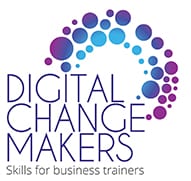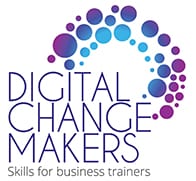2.5 The Importance of Peer Connections and Collaborating
In the sections which follow you will learn about Peer Connections and some tools you can use to connect and collaborate. Before moving on, first have a think about the type of collaborator you are and the skills you need to be aware of to make the very most of collaborative learning.
 The Ringleader
The Ringleader
Big ideas person, discussion starter and collaboration initiator, lots of creative energy
 The Expert
The Expert
Borderline geek, loves trying and mastering, new and innovative ways of working
 The Socialite
The Socialite
Natural storyteller and connector, great communication skills and is used to social conversations on Facebook, Twitter etc
 The Siloist
The Siloist
Enjoys working alone, often reluctant to share work in progress, likes to hoard information
The Dinosaur
Creature of habit, not keen on trying new things, takes encourage to embrace new tools
 The Skeptic
The Skeptic
Can be very vocal opponents to collaboration, often focus on the WIIFM (what’s in it for me?) mentality
 The Executive
The Executive
Decision maker that is driven by time,
speed and efficiency
 The Stealth Ninja
The Stealth Ninja
Likes to lay low and oversee without too much involvement
 The Taskmaster
The Taskmaster
Loves being organised, is operational focused and keen to get things done, loves lists and action plans
- Motivation
In order for collaboration to succeed, Mentors need to ensure everyone involved feels that they have something to gain from the collaboration and they are an important part of working towards a valuable end result. For this to be successful make sure everyone knows the benefits!
- Problem Solving
For collaboration to work, participants need to work together to solve problems, offering advice, skills and help when needed. Two minds are better than one but better yet, how about three or four?
- Diversity
Collaboration encourages participants to consider alternatives. Collaboration works best when the group has a wide range of skills and participants have differing areas expertise.
- Teamwork
Collaboration brings individuals together into a group entity with a shared work purpose.
- Engagement
Collaboration encourages everyone to be an active player. The participants decide when things need to happen and then make them happen
Build the Relationship
- Give and receive feedback from peers or other team members in order to perform the task
- Share credit for good ideas with others
- Acknowledge others’ skill, experience, creativity, and contributions
- Listen to and acknowledge the feelings, concerns, opinions, and ideas of others
- Expand on the ideas of a peer or team member
- State personal opinions and areas of disagreement tactfully
- Listen patiently to others in conflict situations
- Define problems in a non-threatening manner
- Support group decisions even if not in total agreement
- Give and seek input from others (in formulating plans for recommendations)
- Assist others in solving problems and achieving own goals
- Share information, ideas, and suggestions
- Ask for help in identifying and achieving goals and solving problems
- Check for agreement, and gain commitment to shared goals
- Notify others of changes or problems in a timely manner
- Make procedural suggestions to encourage progress towards goals
- Check for understanding
- Negotiate to achieve a “win-win” outcome
Open vs Closed Collaboration
Open Collaboration Learning
- Anyone can join and everyone can participate
- A problem is set/published which launches the collaboration for anyone to contribute to
- Support is sought from an unlimited number of problem solvers, who may contribute
- can be used when the subject area is not well-defined
- must be easy for participants to contribute ideas, work and resources

Time and Place – Collaboration can differ in terms of timing and place also.
Same time/Real Collaboration
- Happens when everyone interacts in real time, usually occurs face to face like in meetings/discussions i.e. same time, same place.
- Allows for immediate response and feedback.
- Thanks to technology though, we no longer have to be in the same place to communicate and collaborate at the same time.
- Technology enables us to collaborate at the same time but be in different places
Leadership can also differentiate the collaborative learning process.
Equal Standing
- In this collaborative model, all participants have equal ranking.
- All the participants share their challenges and make come up with solutions together
Closed Collaborative Learning
- Occurs in private groups where access is limited or moderated
- Here collaborators tackle problems in small groups with one or more people.
- participants chosen by a manager, educator or a group leader
- usually consist of a smaller number of participants than the open model
- can be used for example in inter-company, inter-school collaborations
- should be used when the subject area is well defined, and it is possible to determine the most appropriate contributors for the project

 Different time
Different time
- This occurs where the interaction is not time sensitive and replies are not instant – an example of this is email.
- Technology has also influenced the way this type of collaboration occurs making it flexible: available anytime, anyplace.
- Can be used for one to one communication and one to many communications.
- Contribution to discussion can be more evenly distributed.
Individual Leader
- Occurs when the process is ‘Top Down’. For example, a boss, teacher or group leader leads and sets the tone for the collaborative learning process





